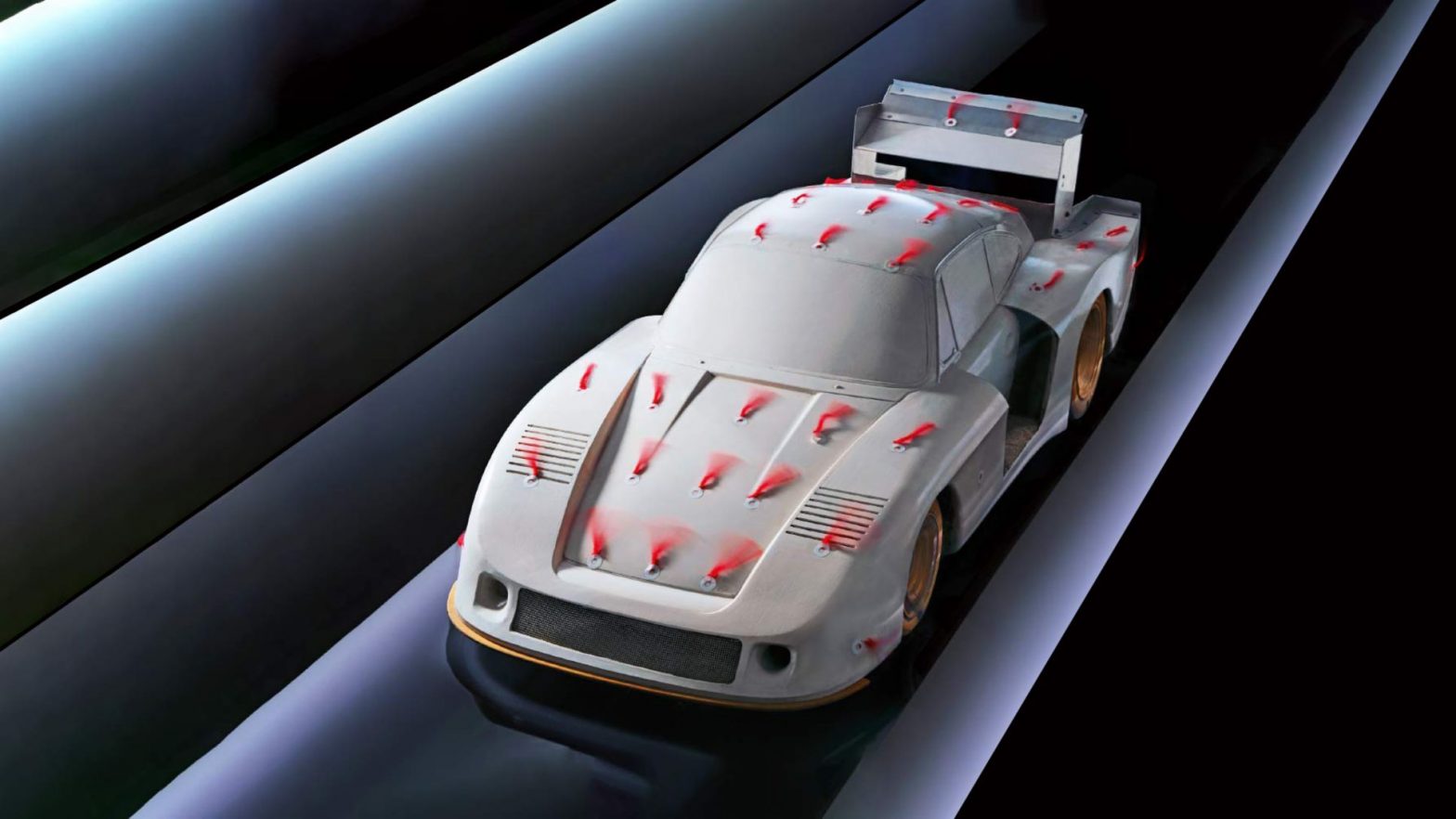Model vehicles feature in many a display case as diminutive dream cars. There is a rather special collection in the Porsche AG company archives that documents research objects – in a variety of scale sizes. Such as the concept for a 1 : 5 wind tunnel model of the Porsche 935/78, otherwise known as the Moby Dick. Just one of many other models, it represents the meticulous approach to vehicle development at Porsche.
In the late 1960s, the experts in the Motorsport department began to use miniature vehicle bodies to obtain important information at an early vehicle development stage and then incorporate this into the development process. This saved time and money. As soon as the cornerstones like the position of the driver, the tank, and the engine had been determined and the body had been drafted, they would produce a model for the wind tunnel in a matter of weeks. In the case of the 935/78, it was a concept made from fiberglass. It weighed around six kilograms, and was 96 centimeters long, 38 wide, and 24 centimeters tall.
The bigger the scale size, the more precise the measurements
As Porsche didn’t have its own wind tunnel back then, race engineer and aerodynamics expert Norbert Singer and his team tested the shape of the 935/78 body in the model wind tunnel at the University of Stuttgart. At the time, it was the only way to take measurements for top-secret projects. Why 1 : 5? This scale size was based on the size of the wind tunnel. Generally speaking, the bigger the scale size, the more precise the measurements. This does, however, also necessitate a larger test facility so that there is sufficient space around the model to ensure the airflows are not impeded by the edges of the wind tunnel. The best visualization is of a race car driving around a racetrack in the rain, creating spray.
In practice, this worked as follows: the Moby Dick concept was blasted with wind at a speed of 180 to 200 kmh by a high-performance blower in the wind tunnel and was tested on a measuring table with a special wind tunnel weighing scale fixed under it. Pins under the wheels connected them to this weighing scale, which is a highly precise instrument that can measure horizontal and vertical forces. By doing so, observers could determine the drag coefficient (Cd) and lift coefficient (Cl). Another focus was on aerodynamic load distribution across the front and rear axles.
Because the actual vehicle was finished not long after the model in the case of the Moby Dick, the aerodynamics were tested on the race car itself. And with success: in the 24 Hours of Le Mans, the Moby Dick hit an impressive top speed of 366 kmh on the Mulsanne Straight as a result of its low drag. But the 1 : 5 model was not retired from use. It was integrated into the considerations for a redesign in 1979, where the focus was now on a completely new rear section.
From the mid-1980s, Porsche began to test in its own model wind tunnel on a scale of 1 : 4 in Weissach. A realistic facility on a scale of 1 : 1 was also developed. This was followed in 2015 by an even more precise version with the new aeroacoustic wind tunnel. The fixed prototypes now stand on a conveyor belt that enables them to be analyzed at speeds of up to 300 kmh. This results in even more precise data as the airflow under the vehicle can likewise be realistically simulated. Miniature sports cars and race cars are still produced for airflow testing to this day, with computer-aided airflow simulations used as an additional tool.
Info
Text first published in Christophorus Magazine, issue 411.
Author: Bianca Leppert
Header Image: Rafael Krötz
Copyright: All images, videos and audio files published in this article are subject to copyright. Reproduction in whole or in part is not permitted without the written consent of Dr. Ing. h.c. F. Porsche AG. Please contact newsroom@porsche.com for further information.
